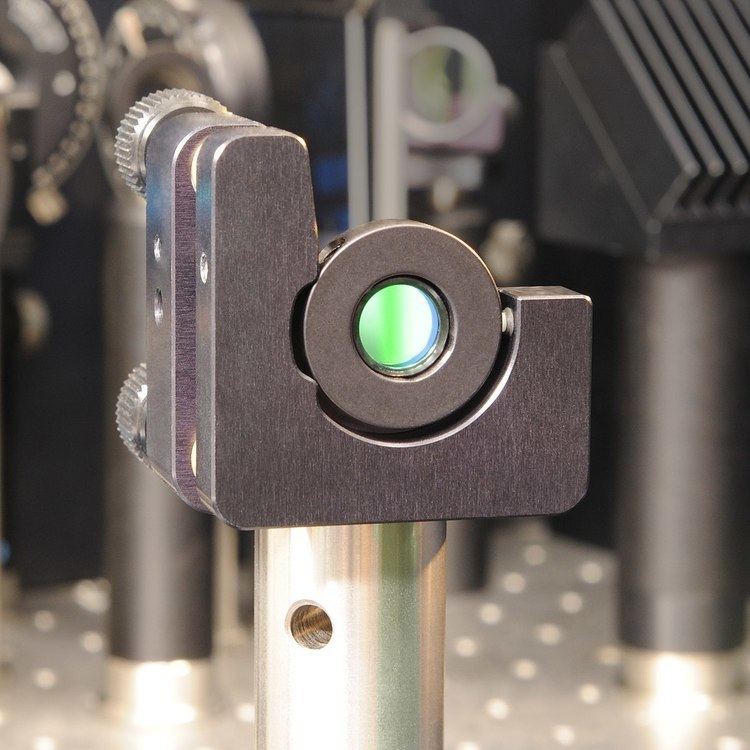 | ||
An interference filter or dichroic filter is an optical filter that reflects one or more spectral bands or lines and transmits others, while maintaining a nearly zero coefficient of absorption for all wavelengths of interest. An interference filter may be high-pass, low-pass, bandpass, or band-rejection.
An interference filter consists of multiple thin layers of dielectric material having different refractive indices. There also may be metallic layers. In its broadest meaning, interference filters comprise also etalons that could be implemented as tunable interference filters. Interference filters are wavelength-selective by virtue of the interference effects that take place between the incident and reflected waves at the thin-film boundaries. The important characteristic of the filter is the form of the leaving signal. It is considered that the best form is a rectangle.
Bandpass filters are normally designed for normal incidence. However, when the angle of incidence of the incoming light is increased from zero, the central wavelength of the filter decreases, resulting in partial tunability. The transmission band widens and the maximum transmission decreases. If λc is the central wavelength, λ0 is the central wavelength at normal incidence, and n* is the filter effective index of refraction, then:
For example, for λ0=1550 nm, n*=1.5, Δλ = λ0−λc=32 nm, the rotation angle is θ = 17.7°. This corresponds to C-band or L-band in 1550 nm fiber-optic communications window. Equipped with a stepper motor and electronics, a tunable optical filter that tunes center transmission wavelength over C-band or L-band by remote control can be achieved. See diagram below for its working principle and tunable optical filter devices.
